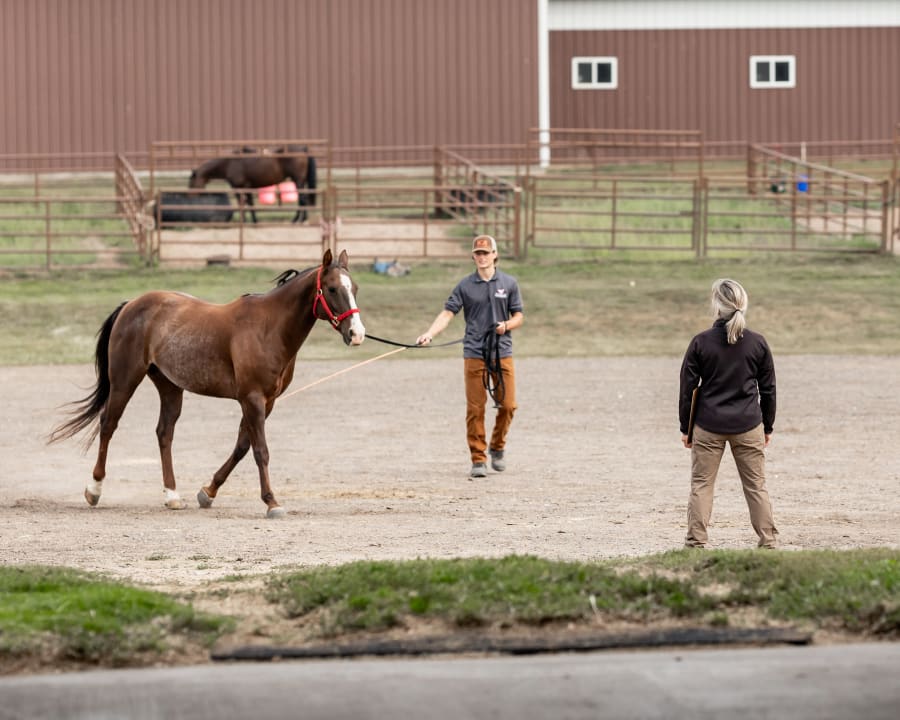Checking Your Horse's Soundness
Lameness evaluations come in many shapes and sizes. Sometimes it is a brief exam before an upcoming show and at other times the horse has a specific lameness to be diagnosed. There is a process not only to identify lameness but to also isolate a the region in the limb responsible for that lameness.
The lameness exam begins by gathering your horse’s medical and farrier history and exercise routine through a series of questions and previous medical records. Once their medical history has been established, we will conduct a musculoskeletal exam of your horse at rest, looking for any signs of injury or stress.

What is Involved in a Lameness Evaluation?
A musculoskeletal exam for any abnormal swellings or thickening is completed, followed by observation of the walk, trot, and canter. This helps to identify the limb or limbs of interest. A hoof tester is applied to ascertain if the hoof is involved. Additionally, limb flexion tests are performed before or after the hoof tester to stress different parts of the limb to further isolate the region causing a problem.
Once a problem region has been identified, diagnostic nerve blocks may be required to further isolate the lameness. Nerve blocks work by injecting local anesthetic around the nerves that provide sensation to the limb. The local anesthetic prevents feeling along the nerve fiber so that the horse is no longer able to feel the source of pain.
Additional diagnostic tools, including digital radiographs and/or ultrasound of the affected region can be performed as determined between you and the veterinarian. After identifying the source of a problem, a treatment plan can be developed.
What Environment is Needed for Lameness Evaluations?
The ideal conditions for lameness evaluations change depending on the horse. For performance horses, we may need a flat, hard surface.
A riding area is preferred, and we may need you to ride your horse so we can evaluate them under saddle, so please have your boots and helmet ready.
For older horses or those with severe conditions, we may be able to perform a much more simple evaluation, such as watching them walk.
New Patients Welcome
Stillwater Equine Veterinary Clinic is accepting new patients! Whether you bring your horse to our Stillwater hospital or we are providing mobile care, trust that we have the tools and skills to meet your horse's every need.
Contact
Hours
-
Click to View
- Monday:08:00 am - 04:30 pm
- Tuesday:08:00 am - 04:30 pm
- Wednesday:08:00 am - 04:30 pm
- Thursday:08:00 am - 04:30 pm
- Friday:08:00 am - 04:30 pm
- Saturday:08:00 am - 12:00 pm
- Sunday:Closed
